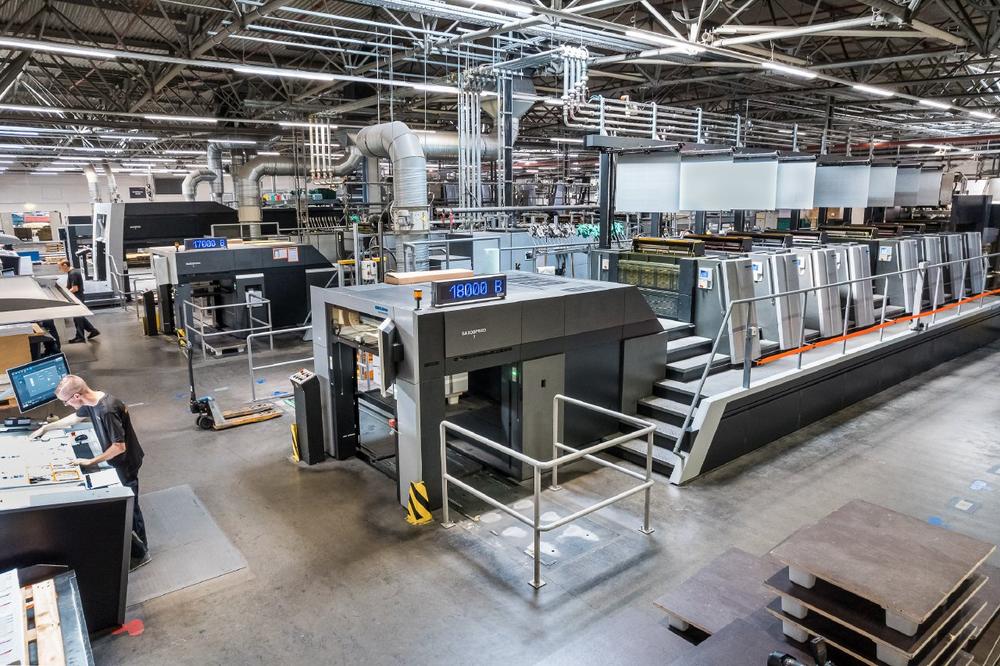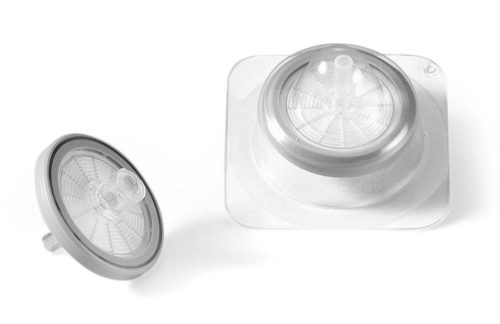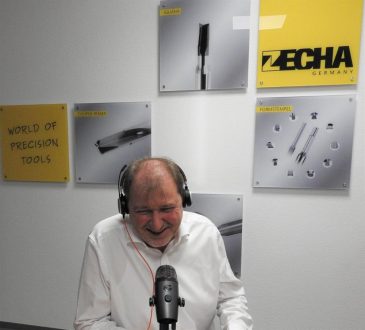
Online print shop SAXOPRINT produces almost autonomously with HEIDELBERG solutions
- Fully automatic “Plate to Unit” printing plate logistics makes offset technology even more attractive for industrial production of short runs
- Pilot user SAXOPRINT boosts productivity and provides development impetus
- HEIDELBERG underscores technology leadership in digitized print production
- Second Plate to Unit system being installed at SAXOPRINT along with new Speedmaster XL 106
Online print shops are seeing signs of a recovery, with orders back at a satisfactory level in this sector, too. Many companies have used the quieter months resulting from the pandemic to optimize their in-house processes and make further progress with digitizing their operations. Consequently, online print shops are leading the way in the print media industry when it comes to standardization and process automation – from web-to-print portals through to the delivery of finished products. If they are to handle large print volumes reliably, these print shops must meet particularly high demands in terms of productivity and stable, fully integrated processes – both at the interfaces to customers and in print production. Furthermore, service and the closely related aspect of customer satisfaction now carry greater weight than in the early years of this business model. Overall equipment effectiveness (OEE) and total cost of ownership (TCO) are also crucial for the long-term profitability of businesses. SAXOPRINT GmbH, which is based in Dresden and is one of the leading European companies in this market segment, is no exception. It employs some 500 staff and handles around 4,500 print jobs each day – commercial, packaging, and advertising work – taking care of every step from receipt of orders through to shipping. From its Dresden site, SAXOPRINT serves both the German and European markets.
Partnership with HEIDELBERG drives innovations
When it comes to print production, SAXOPRINT enjoys a long-standing partnership with Heidelberger Druckmaschinen AG (HEIDELBERG) that includes continuous investment in the latest automation solutions and the Push to Stop concept. As a pilot user of numerous HEIDELBERG innovations, the company regularly provides vital development impetus relating to the practical application of solutions. For example, it is among the pilot users of Plate to Unit, the fully automatic printing plate logistics system that HEIDELBERG unveiled to the public, in conjunction with the latest Speedmaster XL 106 generation, at a world premiere in the fall of 2020. SAXOPRINT has now also switched its production to the Prinect workflow from HEIDELBERG, thereby laying the foundations for fully integrated, automated print production.
“SAXOPRINT aims for price leadership in the online printing sector. We want to offer our customers the best price, combined with reliably high quality,” says the company’s Managing Director, Klaus Sauer. “In the long term, that’s only achievable by fully automating our entire value chain, and that will make the vision of an autonomous pressroom a reality. Workflow integration and the new Plate to Unit system are key milestones on the way to reaching this goal, and HEIDELBERG is an important partner in this regard,” he adds.
“Growing pressure in terms of costs and competition is among the big challenges facing our customers. The best way for them to tackle this is to improve the productivity of their production process. In many areas of offset printing – that is to say our traditional core business – the potential for automation is also far from exhausted,” reveals Ludwin Monz, CEO of HEIDELBERG. “In close collaboration with customers such as SAXOPRINT, we are maintaining our technology leadership, boosting our customers’ competitiveness, and making faster and more targeted progress with getting automation solutions ready for the market,” he emphasizes.
Plate to Unit – another milestone in the Push to Stop concept on the way to autonomous pressrooms
Plate to Unit enables fully automatic printing plate logistics. In other words, the process of making printing plates available at the press and disposing of them is almost fully automated. Guided by intelligent assistance systems, operators only need to intervene where actually necessary. In terms of equipment, HEIDELBERG is thus bridging a major gap on the way to autonomous print production. Printing companies already operating on an industrial scale, such as online print shops with a particularly large number of short runs, can quickly find themselves facing well over ten job changes per hour. That also means a high workload for operators, who are in short supply due to the current skills shortage. Even without any operator input, Plate to Unit makes it possible to achieve consistently high productivity and thus better overall equipment effectiveness (OEE). It also relieves the strain on operators and ensures a reliable, stable process with less production downtime.
“Plate changes are a particularly labor-intensive part of the printing process and our sector, too, is badly affected by the skills shortage. Using Plate to Unit, we achieve high productivity even with short runs. We have also largely eliminated the risk of damaging plates, which makes the overall process more stable and easier to plan,” says Sauer.
Prinect workflow a key aspect of process reliability
Correctly processing incoming data is a key factor in ensuring the process runs smoothly. The Prinect workflow is used to plan the job sequence for Plate to Unit. Prinect Scheduler, a digital planning tool, analyzes the incoming data to ascertain the best sequence based on criteria such as paper grade and format, ink coverage, and folding layout. The printing plates are then imaged fully automatically on a Suprasetter production line. Thanks to Prinect Plate Pilot, the Suprasetter platesetter outputs the printing plates in the correct sequence for the printing process and places
them on a plate trolley that is then transported to the Plate to Unit system. Each plate has a unique QR code so that this sensor-controlled system can make the right plate available in the right printing unit at the right time. During this process, contact is only made with the side of the plates that has not been imaged. This largely eliminates the risk of creases or scratches on the plate, and downtimes can be reduced further still.
“With Plate to Unit, we are taking the development of the smart print shop to a whole new level by bridging a major automation gap and making offset printing even more attractive for the industrial production of short runs. With almost 200,000 plate changes during the pilot phase at SAXOPRINT, the system has provided impressive proof of having the necessary robustness for everyday operation. As part of our ongoing dialog with the SAXOPRINT team, we made specific enhancements to Plate to Unit prior to the recent launch of series production,” explains Rainer Wolf, Head of Product Management Sheetfed at HEIDELBERG.
SAXOPRINT now installing a second Plate to Unit system
Based on its very positive experiences over recent months as a pilot user of Plate to Unit, SAXOPRINT has already decided to invest in a further system, in conjunction with a new Speedmaster XL 106-8-P. Installation is already well underway and commissioning is imminent. “Plate to Unit is a game changer for us. We are expecting this technology to become standard at our company in the medium term,” sums up Sauer.
Heidelberger Druckmaschinen AG
Kurfürsten-Anlage 52-60
69115 Heidelberg
Telefon: +49 (6221) 92-00
Telefax: +49 (6221) 9269-99
http://www.heidelberg.com
Unternehmenskommunikation
Telefon: +49 (6221) 9250-77
Fax: +49 (6221) 929950-77
E-Mail: matthias.hartung@heidelberg.com
![]()





